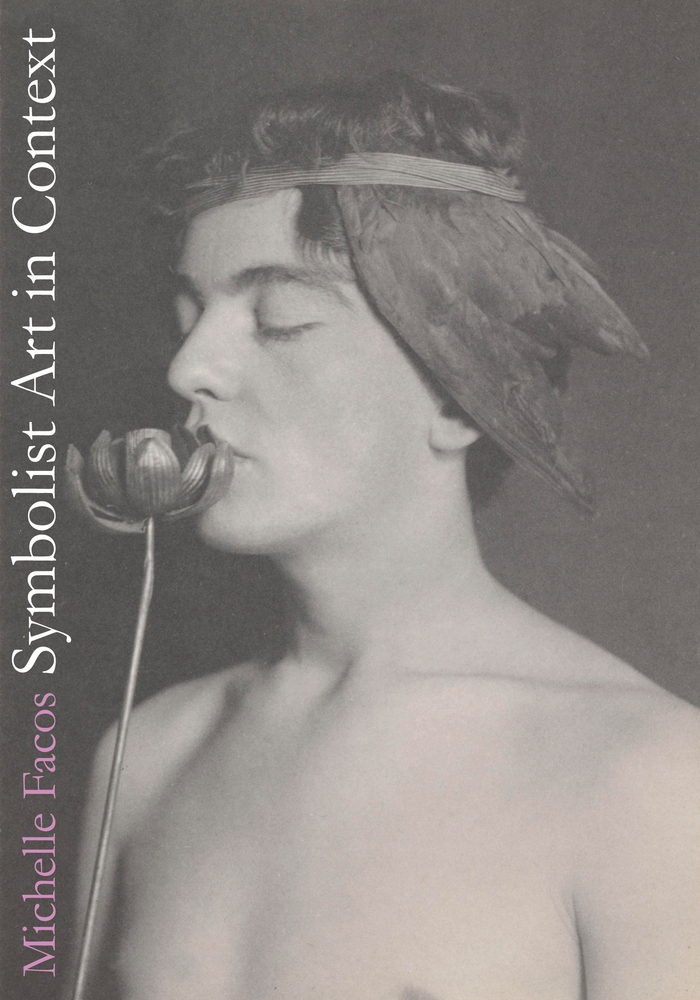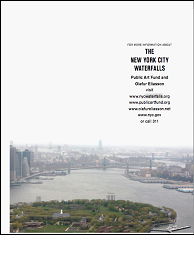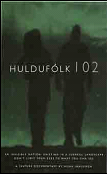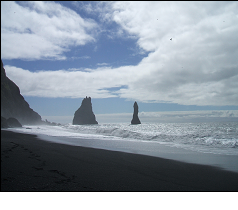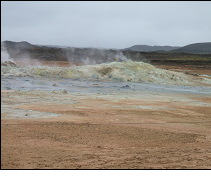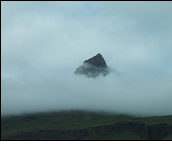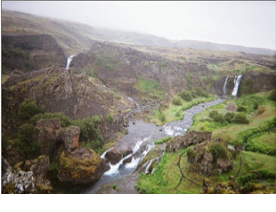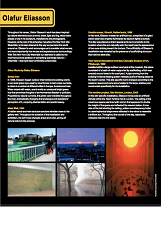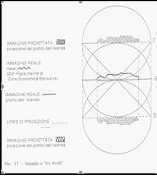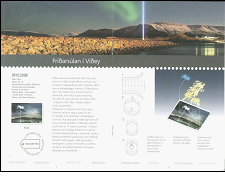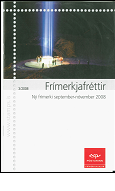I.
Romanticism was largely a reaction to the rational and materialist pursuit of modern science and the secularism of the Enlightenment philosophy. In Germany, a number of Romantic poets rejected Immanuel Kant‘s vision of art as being governed by reason, and rather saw art as juxtaposed with nature as a second language communicated by God to the human being. In this way, however, they also joined forces with science and philosophy by attempting to comprehend being, albeit through different means. The ‘productive imagination’, a notion originally coined by Kant in his Kritik der Urteilskraft, was conceived as a basic power of all creative potencies. It was held to simultaneously beget and behold, and that its beheld ideas were no arbitrary occurrences within the subjective mind, but revelations of nature, of the first cause of existence, of the world-spirit, of God. Novalis, for example, saw this task of realizing ideas as connecting the philosopher and the poet: the former works with concepts, the latter with symbols and signs. Both Novalis and Friedrich von Schlegel speak of philosophical or transcendental poetry which they see as necessary in the time of German Idealism.[1] From this point of view, art does not constitute an isolated sphere, but promises on the contrary a profound kind of knowledge and understanding. Friedrich Schelling went so far as to regard art as the organ of the absolute, in which “the invisible barrier separating the real and the ideal world is raised.”[2] For the Romantics, then, art became Kant’s ‘intellectual intuition’. This was a complete break from the Platonic view of art as identified with lies and deceptions – art now became the organ of absolute truth.
At the same time in Italy, however, Romanticism did not find much fertile ground in which to sow its seeds. On the contrary, it rather sowed seeds of distrust in the Italian mind. There were in particular two reasons for this. Firstly, Romanticism introduced a radically novel kind of poetry that both implicitly and explicitly threatened the Latin classicist tradition. The Italian classicists, who found their artistic ideals in the mythological language of Cicero, Horace and Virgil, reacted furiously to to this new foreign movement that now provoked both the structure and the content of both classical poetry and thought. Secondly, however, its “barbaric Anglo-Teutonic” and Protestant origin aroused suspicion and aversion in Catholic Italy, not because the Italians were all rigorously Catholic (in fact, many had turned away from Christianity), but because Protestantism was decisively renounced as if by instinct. Outcries were frequent against the Gothic, the Nordic, and Romantic literature, as well as against the despotism of “the Huns, the Goths and the Vandals”.[3]
Leopardi’s reaction to Romanticism, as well as the German, including the Kantian, philosophy, certainly contains elements of the general tone of protest in Italy as depicted above. However, his responses differ from the mainstream due to his own rather idiosyncratic philosophy. He provides an anthropological explanation of Romanticism and German philosophy as distinctive expressions of Nordic culture, concentrating on physical factors as being the determinants of the general Nordic character. His attitude to German philosophy, moreover, is complex. On the one hand he decisively rejects it, but on the other he expresses his admiration. This may seem paradoxical but will be elucidated in the following. In the first part of this essay, however, I will discuss Leopardi’s main existential perspective as well as his rather bleak view of modernity, scientific progress and the Enlightenment philosophy of the eighteenth century.
Leopardi was concerned about the consequences of modernity for human life. He strove to find ways to bridge the abyss separating the old and the new order of Western society and thought. This is summed up rather neatly by Antonio Gramsci:
In Leopardi one finds, in an extremely dramatic form, the crisis of transition towards modern man; the critical abandonment of the old transcendental conception but not as yet the finding of the new moral and intellectual ubi consistam which would give the same certainty as the jettisoned faith…[4]
Scientific progress and rationalization had undermined both religious faith and any kind of foundation attempting to ground a metaphysical significance of human life. According to Leopardi, the universe emerging from this development turns out to be mechanistic, material and deterministic. Influenced by French materialist thinkers such as Julien Offray de la Mettrie and Paul-Henri Baron d’Holbach, he conceives of all phenomena, including the human being, as connected blindly in an endless chain of cause and effect according to which they will all be destroyed and their substance amalgamate into other beings. In Leopardi’s “Dialogue between Nature and an Icelander”, the wretched Icelander who travels all over the world only to find a spot where he can be free from pain and suffering, gets to hear this harsh truth about the world from Mother Nature herself:
You plainly show that you have not realized that the life of the universe is a perpetual circle of production and destruction, both linked to each other in such a way that each of them constantly serves the other, and is necessary to conserve the existence of the world; which, if either of them should fail, would swiftly be dissolved. Thus, if anything within the world were free from suffering, the world itself would be harmed.[5]
As Gramsci notes, Leopardi represents the emotional shock in Western culture brought about by a new level of understanding that undermines meaning in an existence that now presents itself as being merely contingent. Leopardi accepted this new understanding and consequently renounced Christianity to take up a radical kind of materialistic atheism, yet dedicated his life to find a remedy for the existential evil of modernity.
In this endeavour, Leopardi adopted a stance to life that could be termed eudamonistic. He identifies happiness as the sole aim of human life. As with the utilitarian thinkers, he further identifies happiness with pleasures, and regards pleasures as both sufficient and necessary means to obtain happiness. However, ‘pleasures’ in his understanding of the term do not explicitly refer to sentiments, but is a catch-all word for everything actually desired by living beings.[6]
Leopardi further states that the human being’s desire for pleasure, and thus for happiness, is a natural instinct. Just as all sentient creatures, human beings are self-loving beings. This merely means that they want to fulfil their desires since they believe that the objects of their desires would lead to happiness, for otherwise they would not be desired at all. From self-love also emanates the tendency to self-preservation, or, in other words, the love of life. But since the love of life emanates from the love of self, and is therefore a secondary derivation from human beings’ instinctual gratification through pleasure, the object of their love is not life as such, but the happiness for which life is an indispensable condition and instrument: “a happy life would undoubtedly be good; but as ‘happy’, not as ‘life’. An unhappy life, for the very reason of being unhappy, is evil.”[7]
The problem with the desire for pleasure is that it is unlimited, because it is not a desire for specific concrete pleasures but for the pleasure, an abstract, absolute, infinite, unlimited pleasure. The existential problem in human living emerges in the actual desire for particular existent pleasures, for these are all finite and thus cannot satisfy the desire for the infinite. Leopardi illustrates this with the following example:
If you desire to possess a horse, it seems to you that you desire it as a horse and as a particular pleasure. But in fact you desire it as an abstract and unlimited pleasure. When you then find yourself in possession of the horse, you encounter a pleasure that is necessarily restricted, and, because of the unsatisfied state of your actual desire, you sense a feeling of emptiness in your soul. And even if it were possible to satisfy it in terms of extension, it would be impossible in terms of duration, because the nature of things also commands that nothing is eternal.[8]
Pleasures accessible to the human being are therefore all limited both in time and space, whereas the desire for pleasure is without limits in either dimension. Failing to find its end in any of the finite pleasures of the world, the desire is condemned to remain in a state of unfulfilment until it is terminated altogether as life itself comes to an end. This is the core of Leopardi’s pessimistic view of human life: the inability of innate natural desire to reach the infinite climax in finite terrestrial reality causes life to be an essential misery.
But in what sense is this a particular characteristic of modernity? Leopardi follows, to some extent, Jean-Jacques Rousseau’s view of the human being’s corruption and alienation from nature. From Leopardi’s point of view, it especially has to do with the thirst for and acquisition of knowledge:
I believe that within the natural order, the human being can be happy also in this world, provided that he lives according to nature and like animals, that is, without grand or unique or vivid pleasures, but in a more or less constantly equal and temperate state of happiness… But I do not believe that we are any longer capable of this sort of happiness after having acquired knowledge of the vanity of all things and of the illusions as well as of the nothingness of the natural pleasures themselves, which is something that we were not even supposed to suspect.[9]
It is, in other words, the realization, the knowledge, of the nullity of things that constitutes the human being’s corruption. The conscious awareness of the natural contradiction that nature lacks the capacity to satisfy the human being’s desires adds to his unhappiness to such an extent that life becomes unbearable. When this realization becomes ascendant in someone’s mind, that person will find himself in the terrifying state of boredom, or noia. Leopardi’s complex notion of boredom seems close to what is usually termed nihilism. Psychologically, boredom comes to the fore when someone becomes fully cognizant of the futility of the innate desire for pleasure and thus sterilizes it. The desire is fully present, and above all sensed, but it is sensed as a desire detached from its objects, because the subject knows that these cannot be reached, and therefore renounces them.
Leopardi attributes this unhappy state to the development of human rationality. Not that reason as such is evil, but it has crossed the borders within which it can function as a useful and, indeed, necessary tool for the human being, and thereby changed into a rather different entity to which Leopardi refers as acquired or unnatural reason. The original ‘primitive’ reason fully conforms with nature in mediating between premises and conclusions by means of simple but crucial judgments. If I experience hunger and feel inclination toward food, ‘primitive’ reason draws the conclusion from these premises that food is something good. It therefore makes value-judgments, or, as Leopardi puts it, beliefs (credenze), without which the human being would be unable to remain alive.[10] Thus, the human being in a state of nature makes perfectly rational judgments. However, such reasoning is not exclusively human. Every animal makes comparable kinds of judgment, relative only to itself and its own well-being. As long as reason’s function is limited in this way, to merely making judgments relative to the interests of those it serves, it promotes life according to nature, or a happy life. However, as soon as it transcends this simple function, it begins to be harmful:
Human beings, and, proportionately, animals, are rational by nature. I therefore do not condemn reason to the degree that it is a natural quality and essential for life, but only to the degree … that it grows and modifies in a way to become the principal obstacle to our happiness, instrument of unhappiness, enemy of the other natural qualities … belonging to human being and human life.[11]
This acquired kind of reason is a corrupt kind of reason that will not limit itself to fulfil the modest task assigned to it by nature, but begins to aspire to truths in conformity to itself, that is to say, truths independent of the relative needs of living beings and the utility for their lives. Instead of being satisfied with subjective beliefs, this developed kind of reason aims at objectivity and absolute truths. Leopardi often identifies this reason with the analytical, calculative and scientific raison of the eighteenth century Enlightenment philosophy: it is the instrumental reason of progress and development, of accumulated truths, and of the identification of the true with the good. For the human being, the evil consequences of this reason derive from its aspiration to absolute truth, for such can never be found. The only truths that can be found, according to Leopardi, are those derived at by ‘primitive’ reason in order to serve the interests of the living being in question. For anything resembling absolute truth would require knowledge of all the relations of that truth with other truths. Nothing can be known as such, or in itself, for nature or existence is a system in which things only manifest themselves relative to other things. Therefore, since
…it can be said that we cannot know any truth perfectly, however insignificant, isolated or particular it may seem, as long as we do not know perfectly all its relations with all the subsistent truths, [we can just as well] say that no truth (however minimal, however evident, clear and simple) has ever been or will ever be perfectly and entirely known from all sides.[12]
This would seem to imply epistemological relativism, and in another passage Leopardi explicitly confirms it:
It is said that every proposition has two aspects whence it is deduced that every truth is relative. But let us note that every proposition, every theorem, every object of speculation, every single thing has not only two but infinite faces, from the point of view of each of which one can consider, contemplate, demonstrate and believe with reason and truth… And anything can be affirmed, and also denied, about every single thing; which demonstrates most vividly and directly that there is no absolute truth.[13]
Given this incommensurable antagonism between nature’s relativity and reason’s aspiration to non-relative unconditioned truths, reason is doomed to failure, resulting in two interrelated and deplorable consequences for the human being.
First, the further reason travels through the universe the more worlds it discovers, demonstrating the smallness and insignificance of the human being. For instance, when Copernicus disclosed an apparent infinity of worlds functioning in much the same way as our own, he “debased the idea of the human being”[14] by depriving him of his former uniqueness as a focus of the universe. Secondly, however, and more importantly, since reason cannot function ‘positively’ by discovering absolute truths, it can only function ‘negatively’, that is, by eliminating prior errors. Even the truths that it conceives of having discovered are later refuted by itself. Thus, great discoveries are nothing but discoveries of great errors. The same applies to the modern (eighteenth century) philosophical ideas themselves:
Modern philosophy affirms that all ideas held by the human being proceed from the senses. This may seem a positive proposition. But it would be frivolous without the prior error of innate ideas, just as it would be frivolous to affirm that the sun heats, because no one has believed that the sun does not heat, nor affirmed that the sun cooled. Rather, the intention and the spirit of the proposition that all our ideas come from the senses is really negative, and the proposition is as if one said: the human being does not receive any idea other than by means of the senses…[15]
In this way, reason has become a sort of inquisition against errors and superstitions that were previously held to be truths. This negativity of reason entails that the progress it claims to uphold is itself purely negative:
It is true that the progress of the human spirit consists, and hitherto consisted, not in learning but principally in unlearning … in realizing that the human being always knows less, in diminishing the number of cognitions, and restricting the vastness of the human sciences. This is truly the spirit and the principal substance of our progress from the eighteenth century until now, even though not everyone, indeed not many, have come to this realization.[16]
Through its desctruction of the illusions of antiquity, this regress, usually termed progress, has gradually brought about the realization of the nothingness of the world. Not that the things that exist are nothing, for in one sense they are something by virtue of existing. But for human desire that can only be satisfied with infinity, all the things and pleasures that exist, are, because of their finitude and transience, as good as nothing. “In this way, they are nothing to the human being’s happiness, while not being nothing in themselves.”[17] Only the illusions have been able to deceive the human being by giving the appearance of infinity and eternity, and thus make him retain a belief in a meaningful world in which he takes passionate interest.
In this very same process, Christianity, itself a philosophical empire basing itself on the domination of reason over nature, of the spirit over the body, played a crucial role by destroying the beliefs and illusions of antiquity. Now another philosophical empire, namely the rational empiricism of the eighteenth century, is conquering Christianity. The last chain in the sequence has been broken and the world stands there in its meaningless nudity. Half a century before Nietzsche, Leopardi decisively declares God’s death:
It is clear that the destruction of the innate ideas destroys the principle of the good, beauty, absolute perfection, and their contraries. This applies to perfection, etc., which would have a foundation, a reason, a form anterior to the existence of the subjects containing it, and would therefore be eternal, immutable, necessary, primordial and existing prior to these subjects, as well as being independent of them. Now where does this reason, this form, exist? And in what does in consist? And how can we know and recognize it if every idea derives from sensations relative to only existing objects? To suppose the absolute beautiful and good is to return to Platonic ideas, and to revive innate ideas after having destroyed them. Since these have been removed, there is no other possible reason for things having absolutely, abstractly and necessarily to be as they are … [except] every factual thing, which in reality is the only reason for everything, and is thus always and solely relative. Thus nothing is good, beautiful, true, bad, ugly or false, if not relatively; and therefore, the correlation between things is, so to speak, absolutely relative… It is certain that when the Platonic forms pre-existent to things are destroyed, God is destroyed.[18]
II.
By claiming art to be the potential solution to the problems of modernity, Leopardi certainly incorporates a Romantic tendency. But he severely criticizes the Romantic outlook, and his criticism is in line with the contrast that he sees between reason and nature. By having explained its occurrences, reason has deprived nature of its previously held mysterious qualities and, instead, reduced it to mere mechanical laws. Having been disenchanted in this manner, nature is now unable to concede the pleasures that it offered so spontaneously before. This radical transformation, however, is not a transformation having taken place in nature, but in the human being. Given that the ancients, with all their ignorance of the workings of nature, gained pleasure from poetry, Leopardi insists that we should concentrate on and investigate their methods of drawing from nature all the pleasure emanating from its imitation. For, as he says, “the beauties of nature … do not change with the changes of those who observe them…”, in fact, “no mutation of human beings ever induces an alteration in nature…” Therefore, since “nature does not adapt to us, it is necessary that we adapt to nature, and, moreover, poetry must not, as demanded by the modern [Romantics], undergo mutation, but is in its principal characteristics immutable like nature itself.”[19]
Leopardi agrees with the Romantics that the poet must imitate nature, but his conception of nature is the unmediated, spontaneous, physical, non-thinking life of passion. Since the faculty of imagination is a part of this nature, the poet produces images that are natural. Correspondingly, he severely attacks the Romantic understanding of nature as a metaphysical or ontological entity. Such ideas, he says, are ultimately the outcome of the enhancement of reason. Hence the Romantics are not poeticizing about nature but about civilization, and this, in Leopardi’s view, is not poetry at all.[20] The same complaint applies to the task assigned to poetry by the Romantics as being an ‘organ of truth’. To use poetry as a means to obtain truth simply obstructs its proper task of providing pleasure, for poetry must be deceptive in order to fulfil the second task. The negative consequences of the Romantic quest for truth, Leopardi further argues, can be seen in its insistence on the exploration of pathetic sentimentality, a form of ‘scientific psychology’, which is purely artificial, having nothing to do with natural sentiments and merely expressing the sickness of modern civilization.[21]
Leopardi holds on to the Platonic view of art and poetry as sources of deception. However, he takes this to be a positive function. By insisting upon the deceptive powers of poetry, Leopardi wishes to bring the human being into closer conformity with nature by enhancing the role of the imagination in the human mind. The virtue of imagination is that it deceives our desire for the infinite into believing that it has acquired it. And thus happiness, obtainable only by means of infinite pleasure, can be felt when we, in our ignorance, are unable to behold the limits of the indefinite pleasure that we experience. Hence ignorance is a precondition for happiness:
The faculty of imagination … is the main source of human happiness. The more it rules in the human being, the happier he will become. We see this in children. But it cannot rule without ignorance, at least a certain kind of ignorance, as with the ancients. The cognition of the true, that is, of the limits and definitions of things, restricts imagination.[22]
The ignorance of the ancients brought them happiness and contentment with the world. But, as Leopardi himself realizes, these times are long gone:
I prefer the savage stage to the civilized one. But having set off and arrived at a certain stage, it is impossible to reverse the development of the spirit, impossible to hinder the progress of individuals no less than peoples. For times immemorial, the individuals and nations of Europe, as well as a great part of the world, have been in possession of a developed spirit. To revert to the state of the primitive and the savage is impossible.[23]
The ignorance of the ancients cannot be reconstructed. The illusions that previously produced the appearance of meaning in the world have now been annihilated. However, this does not entail that there are no myths and illusions left in the modern world. On the contrary, the benevolent myths have been exchanged for particularly malignant ones. This is because reason itself is a creator of myths, of “hideous and acerbic myths”.[24] They are brought to expression in the Enlightenment belief in the coincidental progress of truth and happiness, and in the equivalence of the rational, the good and the beautiful. A comparison between the modern human being with all his truths, however, and the human being of antiquity living in midst of deceptions reveals the superiority of the latter in terms of the happiness that it produces:
[the human being] needs to know what works for his sake. Absolute truth … is indifferent to the human being. His happiness may consist in both true and false cognition and judgment. Crucial is that his judgment be truly suitable for his nature.[25]
The problem, however, is that this realization can only be arrived at after truth, with all its dreadful consequences, has revealed itself. Having reached that stage, it is not easy to see how truth could be disposed of and exchanged for a more favourable interpretation of the world. This rather alarming paradox does not escape Leopardi’s attention:
I am not unaware of the fact that the ultimate conclusion we draw from true and perfect philosophy is that we must not philosophize. From this we infer, first, that philosophy is useless, for to achieve the effect of non-philosophizing, we do not need to be philosophers; secondly, that it is extremely harmful, for that ultimate conclusion can be learned only at one’s own expense, and once it has been learned, it cannot be put in operation because it is not in the power of human beings to forget the truths they already know…[26]
When Leopardi refers to philosophy in this manner he means of course the empirical materialist philosophy of the Enlightenment, the “true and geometrical”, as he calls it, which has undermined the plausibility of any systematic metaphysics that attempts to construct a teleological scheme of the universe. A philosophy such as Kant’s, therefore, is to him no less plausible than a dreamy fairy tale, however much he would like to be able to adhere to such “poems of reason”.[27] In his essay, Discourse on the Present State of the Customs of the Italians, he endeavours to explain the tendency in German thought, philosophy and literature by contrasting it with the Italian national character.
He paints a rather bleak portrait of Italian society as hypocritical and morally degenerate. Italians, he says, only care for the appearance of morality, i.e. for the favourable opinion of themselves that they believe others will have of them if they behave outwardly in a certain manner. This is the only foundation left for morality in Italy. The hypocritical character of Italians surpasses by far the hypocricy of other European nations. This is because Italians are in one sense more ‘advanced’ than the nations of Northern Europe. The fact that the Italians are much less fruitful than the Germans, the French and the English in the construction of theoretical philosophy is simply one side of the coin of their being more advanced in the practice of philosophy. In other words, Italians have realized the futility and meaninglessness of constructing fantastic philosophical systems without foothold in reality, while the Italian hypocrisy, egotism and indifference to others is a result of having realized the collapse of the metaphysical foundations of morality, which leaves behind a complete kind of moral relativism.[28]
The anthropological reason for this unhappy state of the Italians is that they are closer to nature in the sense that they possess more inner sensitivity, i.e. are more acutely aware of their environment, than North-Europeans. Being closer to nature might imply greater happiness, but in this case it actually works in such a way that Italians are more acutely affected by civilization. Therefore, they are far less susceptible to illusions which alone can preserve morality. Nordic people, on the contrary, are less sensitive, hence less susceptible to the disillusionment of civilization, and their imagination is more easily aroused.[29] In other words, they are slower in internalizing the inescapable consequences of modernity. The Nordic peoples are now the warmest in spirit, the most imaginative, the most animated and those who are most easily influenced by illusions; they are the most sentimental, have the greatest character, spirit and customs in Europe, and thus produce the greatest poetry and literature. They are much closer to the ancient in that they are less ‘advanced’ with regard to the corruptive effects of reason:
If we can find literature in our times (and in recent times) where systems and opinionated fictions are still in use, it is in England, and much more so in Germany, because one could really say that there is no literate man of any kind among the Germans who does not either make or follow a decisive system, and this is for the most part, as is the case with the usual and the ancient application of systems, a fiction.[30]
The systems constructed by modern philosophy are hence mere ‘opinionated fictions’ or ‘fantastic constructions’ that say little if anything about the world as it really is. The same applies to the philosophy of Kant:
In Germany, and partly also in England, one continually finds systems and fictions in all literature, in every kind of philosophy, in politics, in history, in criticism, and any segment of linguistics through to grammar, in particular related to ancient languages. For the longest time in Europe, there was no sect or school of such a philosophy [of systematic fictions], much less of metaphysics, until very recently in Germany … in the sect and school of Kant, which is precisely metaphysical, and which is again subdivided into diverse sects. Before Kant, it was the school of Wolff.[31]
Kant’s critical philosophy is thus deemed by Leopardi as being derived and deduced from the abstract speculative fantasies that the latter calls metaphysics. He displays clear admiration for German culture, as well as for its philosophical fictions and systems that he claims to be a fruit of the Occidental residuum of the imaginative ‘virginity’ of antiquity. But however enchanting, these constructions cannot be a viable alternative to him, for it is precisely this kind of philosophizing that has been rendered unpersuasive and virtually ridiculous by the modern empirical philosophy of the Enlightenment.
III.
We have seen that Leopardi is fully aware of the impossibility of returning to the primitive natural state. The most we can possibly do is to imitate the superior happiness enjoyed by the ancients; the happiness deriving from ignorance can never be resurrected. Nor can we refrain from philosophizing, even though we know that it would make us happier. But this does not mean that all is lost. Leopardi suggests an attempt to find a certain balance between reason and nature. The following passage could in fact be a reference to Kant and his insistence on the moral law:
Reason is never as efficient as the passions. Listen to what the philosophers say: the human being ought to be moved by reason, just as, or rather much more than, by passion; indeed, he ought to be moved by reason and duty only. Nonsense. Human nature and the nature of things can certainly be corrupted but not corrected … We do not need to extinguish passion with reason, but to convert reason into passion; to turn duty, virtue, heroism, etc., into passions.[32]
Leopardi’s way out of the human being’s dreary valley of tears consists in carrying out even further the Enlightenment quest for truth. Reason’s domination is accepted, and the truth of the human being’s miserable state in the universe cannot be ignored, but by naturalizing reason, that is, by combining it with the natural faculty of imagination, reason can also move into the human realm and discover that which is “truly suitable for his nature”. Therefore,
It is wholly indispensable that [a philosopher] is a great and perfect poet; not in order to reason as a poet, but rather to examine with his cold reasoning and calculation that which only the very ardent poet can know.[33]
This may seem paradoxical, but it is at this stage that reason, and thus philosophy, by inquiring into the quite different truth of the human being’s necessary aspirations, reaches its culmination by realizing its own superfluousness. However, the paradox vanishes as soon as we see that reason has simultaneously been transformed. In addition to the realm of external nature, the scope of philosophy has now been expanded to embrace as well the realm of inner human nature. The discipline of naturalized reason, the new expanded philosophy, is what Leopardi calls ‘ultraphilosophy’. Since reason cannot reverse its development and become primitive again, it has to exceed its own limits and transcend itself. In other words, since reason has eliminated the possibility of reviving the ancient faith in the illusions,
our regeneration depends, so to speak, on an ultraphilosophy that brings us closer to nature by exploring the entirety and the interior of things. And this ought to be the fruit of the extraordinarily enlightened men of this century.[34]
By exploring the particular human domain, this new kind of philosophy does not seek absolute truths or facts but values pertaining to the happiness of the human being. While these values shed a clear light on the harmfulness of philosophy for us, there is no need to delve into the problem of how to dispose of it. For at this stage, philosophy has already developed into a different kind of philosophy, a sort of synthesis of the philosophy of ‘advanced’ reason and the one of ‘primitive’ reason. This new philosophy aims at value-judgments relative to the human being only with exclusive consideration of the special circumstances of modern human life, which is mainly the outcome of instrumental reason’s domination.
Being naturalized, Leopardi´s ultraphilosophy has disposed of the value-laden dualism that typifies the Platonic-Christian tradition. Rather, there is a turn towards celebrating the body. The human being is, in Leopardi´s understanding, a mere body, but, more importantly, the human being´s happiness consists in the vividness of sensations and of life, a vividness that is never as great as when physically experienced.[35] Leopardi seeks to revive the importance of the passions and of physical activity, and, accordingly, reduce the tendency to contemplation, which to him is a sure sign of corruption. Contemplation merely enforces the inner sensitivity of life, which, because of its conscious non-spontaneous character, merely leads to unhappiness. On the other hand, the multiplicity, novelty and singularity of physical sensations distract the mind from recognizing the limits of things, and by fulfilling many little pleasures the human being would have the impression and illusion of infinite pleasure.
This is precisely what Leopardi means by imitating nature. He agrees with the Romantics that imitation is not equivalent to copying, but with ‘nature’ he means creative spontaneity. However, he rejects the Romantic ontological view of nature and sees it instead as a constantly impulsive physical entity. What Leopardi sees as good in nature is precisely its spontaneous vital spark, its constant movement and unpremeditated motion.[36] His endorsed vitalism is meant to bring the human being closer to the mobility and spontaneity of both nature and animals. It is worth noting, in this respect, that Leopardi decisively turns away from the tendency in Occidental thought to aim at constancy, at the fixation of the human being´s natural and social environment through eternal Platonic or even Kantian transcendental ideas. An excessive effort to freeze or paralyze nature, both in its workings outside of the human being but not least within him, merely serves to enhance his conscious misery. If we want to reduce such feelings, Leopardi says, we must succumb to nature and try to live in harmony with it by adapting to it.[37]
It is significant that the poet-philosopher who opts for the enhancement of the body and adaptation to nature is an enlightened philosopher. He has become keenly aware of the metaphysical meaninglessness of being. But in order to release himself from the oppressive consciousness of his awareness, he indulges in ‘natural’ actions, i.e. corporeal activities or imaginative conceptualizations, in order to put it temporarily aside. In this sense, while in a state of distraction, he is ignorant of his unfortunate but inescapable fate, and, for a moment, imagination reigns. The completely enlightened person is, in other words, capable of producing in himself a semblance of ignorance that temporarily imitates the ignorance of the ancients. And this can only happen through artistic experience: “The human being hates inactivity, and wants to be liberated from it through fine art.”[38] Fine art, and poetry in particular, arouses the imagination, deceives the senses, and can produce a certain ‘second sight’:
To the sensitive and imaginative person … the world and the objects are in a certain sense double. His eyes will see a tower, a farmland; his ears will hear the tolling of a bell; and, at the same time, his imagination will see another tower, another farmland, hear another tolling. It is the objects of this second kind that contain all the beautiful and pleasant aspects of things.[39]
By reviving its mythological language, poetry not only distracts the person from his dread of living, but also induces in him a particular view of life, a curious combination of a pragmatic and an aesthetic view of life, which, on a cognitive level, is known not to correspond to reality but which both produces happiness, and, by strengthening certain values, gives rise to action. Leopardi often argues that ancient values such as patriotism, virtue, heroism, glory and honour, all illusions, were the cornerstones of true morality, a morality of conviction, when moral actions were believed to be ends in themselves, not mere means to the agent´s own egotistic ends. Not only did these values preserve morality but also provided life with precious meaning and produced happiness by provoking physical action, and preventing the human being from delving into excessive contemplation. Although these lost values cannot be revived, Leopardi contends that the ultraphilosopher is capable of adopting a certain aesthetic world-view conducive to his happiness. However, it also requires the adoption of conscious illusions:
The illusions cannot be condemned, disdained and persecuted except by those who are illusioned and believe that this world is, or could be, really something, and in fact something beautiful. This is a major illusion: and therefore the quasi-philosopher combats the illusions precisely because he is illusioned; the true philosopher loves and preaches them because he is not illusioned. And the combat against the illusions in general is the most certain sign of a totally imperfect and insufficient knowledge and of a notable illusion.[40]
Among the primary functions of the myths of antiquity was the transformation of the numinous indefiniteness, of the overwhelming powers of the unknown, into a nominal definiteness; they made the strange familiar and addressable, and thereby delivered the human being from the terror of being surrendered to an immensely more superior reality. Today, after the myths have collapsed, we must look mechanistic reality straight in the eye. But we can decorate and anthropomorphize the world so that it will, at least, have the appearance of being a world belonging to us – and a world in which we belong. It is the Apollonian transfiguring dream – but which must be known by the dreamer to be a dream.
Leopardi’s aim is therefore not to return to or preserve the past, but merely to find a substitute for the hope that we once possessed but have lost somewhere on our way. Such a substitute can be found in the faculty of imagination that momentarily enables us to regain the joy of living. Pleasure and joy must be the proper aim of poetry and art, for it is joy, not melancholy or sentimentality, that brings about the best results in dealing with the world. As Leopardi, says, the world does not like to hear crying – but laughing.[41] Sentimental poetry of lament, characterizing much of Romantic poetry, only serves to demonstrate the dreary truth of the human being’s vulnerability and insignificance and thus to obstruct the path towards happiness. This path, however, is arduous, and the force of the obstacles consists in their seductive powers; one is often tempted to collapse against them with a weary sigh and admit one’s surrender.
This applies not least to Leopardi himself whose poetry is not altogether free from Romantic sentimentality. In some passages he also expresses strong doubts about the possibility of resuscitating anything resembling the innocent joy of life as found in ancient poetry. In his later poetry in particular, however, he expresses this sentimentality with an unmistakable hint of cynicism. He often demands that we at least show enough strength to face nature’s evil creator and destructor with a cynical laugh; if we cannot laugh despite our misery, then the least we can do is to laugh at it:
I believe it to be much worthier of the human being and of magnanimous despair to laugh at our common ills rather than sighing, weeping and screeching together with the others and instigating them to do the same.[42]
To be sure, the Leopardian laughter still echoes in many valleys of Occidental thought.
[1] Paul Kluckhohn. Das Ideengut der deutschen Romantik. Fifth edition (Tübingen: Max Niemeyer Verlag, 1966), p. 174.
[2] Cited from ibid, p. 160.
[3] Francesco Flora, “La Rivolta romantica e la Poesia come Verità”, in Leopardi. Discorso di un Italiano intorno alla Poesia romantica, con una antologia di testimonianze sul Romanticismo, ed. By Ettore Mazzali (Bologna: Cappelli Editore, 1970), pp. XXff.
[4] Antonio Gramsci, Gramsci’s Prison Letters (Lettere dal carcere), A selection translated and introduced by Hamish Henderson (London: Zwan Publications, 1988), p. 235.
[5] Giacomo Leopardi, ?Dialogo della Natura e di un Islandese“, Operette Morali (Milano: Garzanti, 1984), p. 129.
[6] Giacomo Leopardi, Zibaldone di pensieri, in Tutte le Opere, con introduzione e a cura di Walter Binni, vol. II (Firenze: Sansoni, 1969), 178.
[7] Giacomo Leopardi, “Dialogo di un fisico e di un metafisico”, Operette Morali, p. 98.
[8] Giacomo Leopardi, Zibaldone di pensieri, 165-6.
[14] Ibid, 84. Nietzsche expresses a strikingly similar thought in his Genealogy of Morality, which, however, cannot be an influence of Leopardi‘s, since the Zibaldone was not published until 1898: “Isn’t it the case that since Copernicus the self-diminution of the human being and his will to self-diminution have been progressing without halt? Alas, the faith in his dignity, his uniqueness, his irreplaceable position in the chain of being has gone. The human being has become an animal, not a metaphorical animal, but absolutely and unconditionally — he, who in his earlier faith was almost God (“child of God,” “God-man”) … Since Copernicus the human being seems to have brought himself onto an inclined plane. He‘s now rolling at an accelerating rate past the mid-point. But where to? Into nothingness? Into the “penetrating sense of his own nothingness”? Friedrich Nietzsche, Zur Genealogie der Moral, Kritische Studienausgabe 5 (München: dtv/de Gruyter, 1988), 3:25, p. 404.
[19] Giacomo Leopardi, “Discorso di un Italiano intorno alla Poesia romantica”, in Giacomo Leopardi – Opere. La Letterature Italiana. Storia e Testi, vol. I (Milano and Napoli: Riccardo Ricciardi, 1982), p. 781.
[22] Giacomo Leopardi, Zibaldone di pensieri, 168.
[26] Giacomo Leopardi, “Dialogo di Timandro e di Eleandro”, Operette morali, p. 269.
[27] Leopardi, Zibaldone di pensieri, 2616.
[28] Leopardi, “Discorso sopra lo Stato presente dei Costumi degl‘Italiani”, in Giacomo Leopardi – Opere. La Letterature Italiana. Storia e Testi, vol. I (Milano and Napoli: Riccardo Ricciardi, 1982), pp. 854ff.
[32] Giacomo Leopardi, Zibaldone di pensieri, 293-4.
[36] Cf. Cesare Luporini, Leopardi Progressivo (Roma: Riuniti, 1980), p. 39.
[37] See e.g. his prose “Elogio degli Uccelli” (Operette morali, pp. 225-237) in which he expresses his admiration for and even envy of birds that can never suffer from boredom because of their ability to move swiftly from one place to another.
[38] Giacomo Leopardi, Zibaldone di pensieri, 2362.
[41] Giacomo Leopardi, Pensieri, in Giacomo Leopardi – Opere. La Letterature Italiana. Storia e Testi, vol. I (Milano and Napoli: Riccardo Ricciardi, 1982), §34
[42] Giacomo Leopardi, “Dialogo di Timandro e di Eleandro”, p. 266.
